Hydrogen peroxide for the pool: dosage and instructions for use
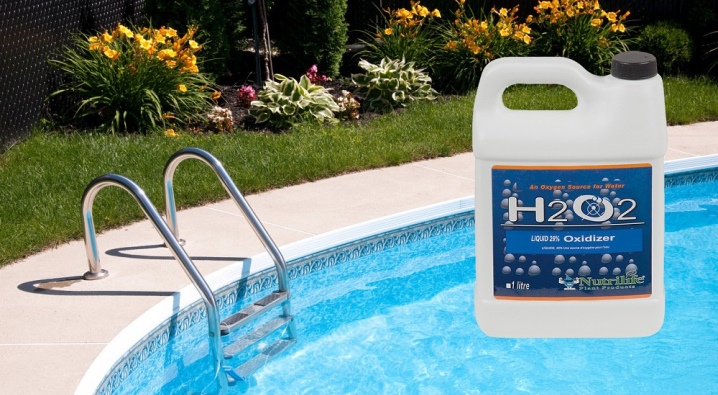
Hydrogen peroxide has recently been used to clean swimming pools. It is inexpensive and effective. Some call this drug a time bomb, others call it a universal invention, but in any case, it is important to know the rules for working with this drug.
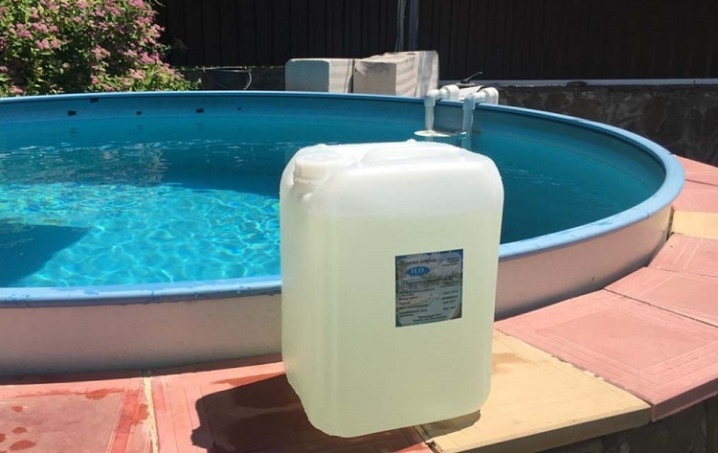
Advantages and disadvantages
Swimming pool hydrogen peroxide is mainly used to disinfect water. It has reducing and oxidizing properties. Most often, this cleaning method is chosen for small artificial reservoirs in the country.
If you do everything right, then perhydrol is not harmful to humans. It is worth remembering that when interacting with other reagents, peroxide decomposes. If it is stored closed in a cool room, then it does not lose its properties for a long time.
It is impossible to speak with full confidence about the harmlessness of the product. Like any other chemistry, peroxide has both advantages and disadvantages.
Advantages:
- there is no pungent smell;
- easy to use;
- green algae discolor when interacting with the product;
- does not harm the environment;
- when used does not change the pH of the water;
- low cost;
- high efficiency.
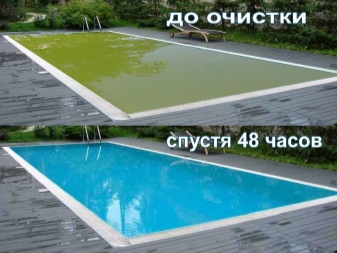

Disadvantages:
- the effectiveness of the agent used depends on the temperature of the water in the pool;
- cannot be used together with chlorine and lime;
- disintegrates after at least 12 hours, more often only after 72 hours.
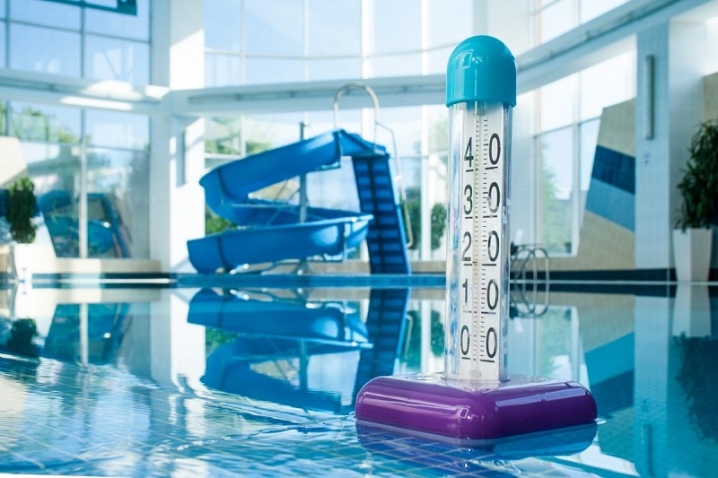
What is concentration?
For pool cleaning, hydrogen peroxide is supplied in large canisters. Their volume can be from 10 to 30 liters.
There is technical and medical (37%) hydrogen peroxide. Medical is produced according to GOST 177-88, technical - according to it, but it is marked A.
The high interest comes from Finland. Its packaging says 60%. There is also 40% peroxide on sale.
It is believed that the medical device is cleaner, but if we consider it in the framework of the cleaning of the pool, then this fact does not have any significant role.
It must be said that there is 90% peroxide on store shelves. It contains sodium pyrophosphate. Without it, the substance is unstable.
This peroxide is sold exclusively in aluminum flasks.
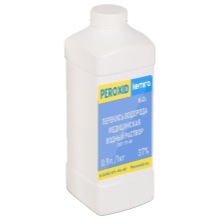
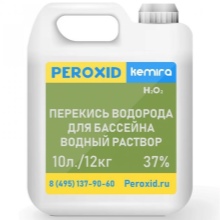
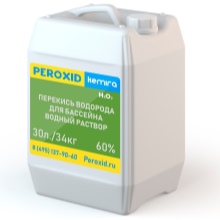
Precautionary measures
The ideal solution for cleaning an artificial reservoir is considered to be high concentration perhydrol. If such a product gets on the skin or mucous membranes, it immediately causes a burn. This is why it is so important to take precautions.
Unscrew the lid slowly. Before that it is worth paying attention to whether the container is swollen and whether its walls are hot.
Work with peroxide with glasses and gloves. It is worth remembering that its specific gravity is greater, therefore it does not mix well with water, it is required to thoroughly mix it. It is preferable to carry out cleaning with a working filter.
It is strictly forbidden to allow children to approach the product and taste it.
Already in a concentrated form (60%), peroxide is classified as an explosive substance. If it becomes contaminated, then in a closed container, decomposition into such constituent elements as water and oxygen begins. Spontaneous combustion may occur.
In this state, the perhydrol temperature increases to 1000 degrees. The released water instantly takes the form of vapor, and it has a volume of 7 thousand times the liquid.
That is why it is safe to work only with a lower concentration product.

How to use?
Before using perhydrol, it is important to study the instructions for use in detail. You can work with the product only if the pool bowl is no more than 85 cubic meters in volume. m.
Processing will be safe only if the peroxide is used correctly, while maintaining the concentration. For different volumes, the flow rate will differ.
Be sure to pack the product with a label indicating:
- concentration;
- expiration date;
- batch numbers;
- GOST.
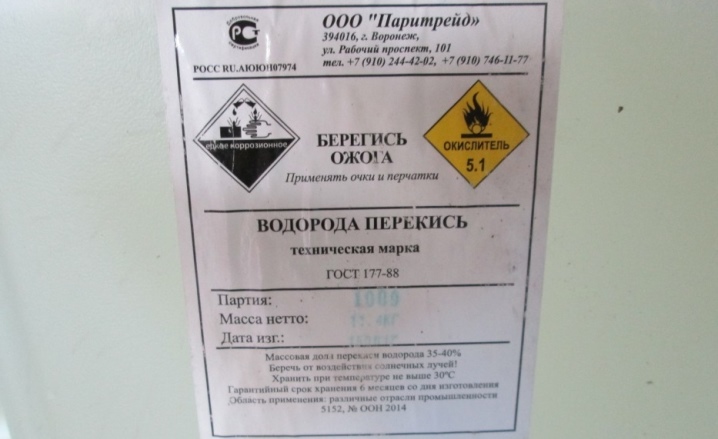
Payment
Depending on the degree of pollution of the pool, the dosage per cube of water must be calculated correctly. Perhydrol concentration, water temperature and other factors play a greater role.
If you know in advance the volume of liquid that is placed in an artificial reservoir and the degree of pollution, then you can easily independently calculate the amount of hydrogen peroxide required for cleaning.
The formula for cleaning the pool looks very simple: you need to multiply the consumption rate by the available volume.

How to breed?
With such a product, it is very important to maintain the correct proportions so that the peroxide is safe and fulfills its task.
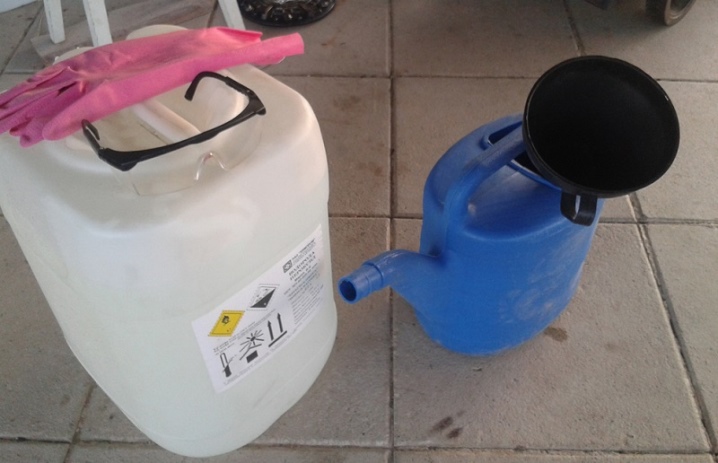
Weak pollution
With light pollution per 1 cu. m, a dose of 500-700 g of hydrogen peroxide is enough. It must be understood that the remedy should be 38%.
If you use a 60% solution, then the amount that is poured into the same volume is reduced. In this case, the dose is 400-500 g.
It will be possible to swim in the water in 24 hours.
This is enough time for the peroxide to disintegrate.

The average
When the pool can be assessed as moderately dirty, the dose of perhydrol for the same volume of water should be increased to 800-1100 g at a concentration of 38%.
A stronger solution of 60% is enough and 600 g.
The period of complete disintegration is at least 48 hours.
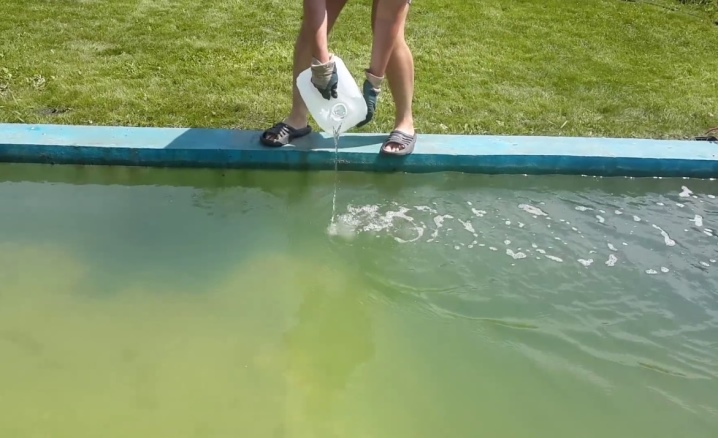
Strong
In case of severe contamination of the container, the consumption increases to 1200-1400 g, if it is a 38% solution, and up to 800 g, if 60% perhydrol is used.
It will be possible to swim in the reservoir only after 72 hours.
It is always best to keep it longer than the specified time to avoid skin burns. You will need to add the product through a filter or pour it over the surface so that it dissolves better.
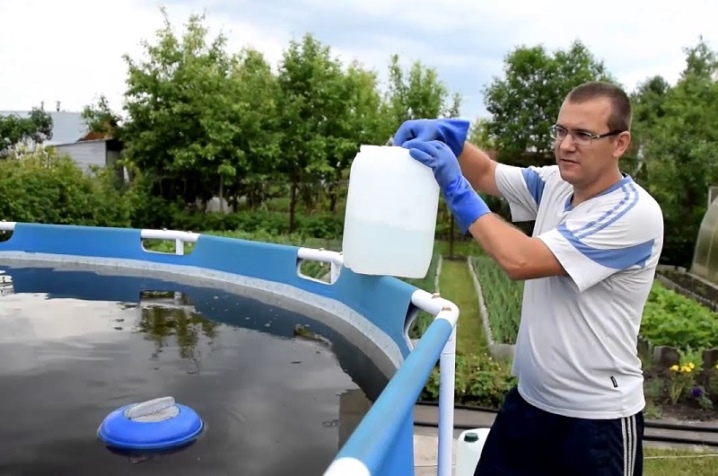
Pool preparation
Before starting cleaning, be sure to remove all debris from the water. You can use a landing net for this. When there are no leaves and branches in the water, you need to take a scraper and remove plaque from the walls of the pool.
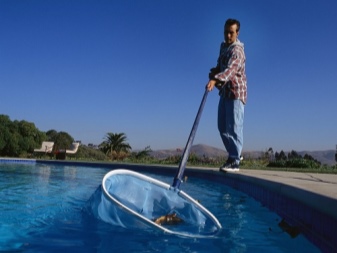
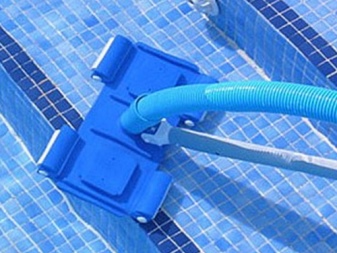
Cleaning
You can quickly clean an artificial reservoir with such a tool, without spending a lot of effort. The prepared solution is simply poured using a circulation pump, which operates in filtration mode.
Before that the water intake pipe must be lowered into a container where peroxide is poured... If there is no pump, then the prepared product is divided into two portions and poured into water in different places throughout the volume using a simple watering can.
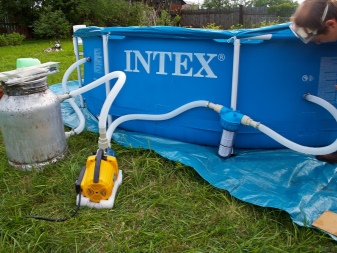
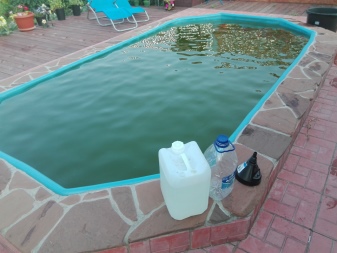
Common mistakes
Those who have not yet used peroxide often make classic mistakes that could have been avoided if you read the instructions:
- After treatment, the pool cannot be covered with an awning, since oxygen is released during the decomposition of peroxide;
- work with the product exclusively with gloves and with other protection of the mucous membrane and skin;
- you can swim in water only after the perhydrol is completely decomposed, namely after 72 hours, otherwise such water is dangerous to health.

Storage
The shelf life of hydrogen peroxide is prescribed in GOST and depends on the concentration of the agent.
If this concentration is 3 and 5%, then from the moment the package is opened, perhydrol can be used within 36 months. In this case, the container must be well closed. If the integrity of the packaging is violated, the shelf life is reduced to one month. If a solution using hydrogen peroxide is used, then its shelf life is only 24 hours.
Industrial concentrations are hazardous and highly oxidative. If stored improperly, such a product can become explosive. After opening the container, it is allowed to use peroxide for six months. With the solution, as in the previous case, the shelf life is only a day.
There are some features that affect shelf life.
- The container is important, therefore, most often the product is sold in bottles with dark glass or opaque plastic containers.
- The air temperature for low concentration peroxide should be no more than 23 degrees. It is best to use a refrigerator for this.
- It is forbidden to lower objects into the general container and then close it, since any dirt leads to the activation of the decay process, and then the substance becomes explosive.
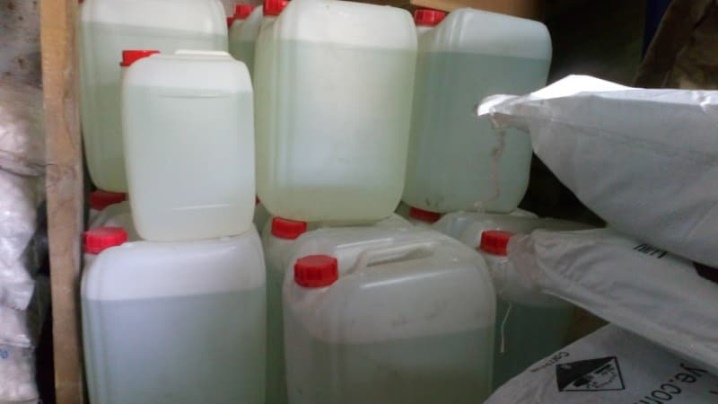
Review overview
Although hydrogen peroxide is relatively recently used to clean artificial reservoirs, many summer residents have already appreciated its invariable advantages.
The most important thing is to use perhydrol with caution and use personal protective equipment. It is strictly forbidden to work with peroxide with your hands; at high concentration, you can get a severe burn.
The second important rule is not to use the reservoir until the stage of complete decay has passed. Therefore, it is important to warn children about this and make sure that they do not come to the pool.
According to reviews, perhydrol is ideal for water purification of various degrees of contamination, but if you do not take into account the peculiarities of storage (including in winter) and the use of the product, then you may run into trouble.
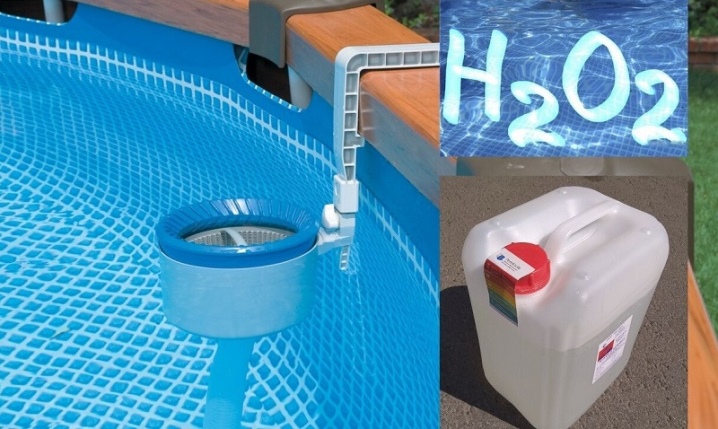
You can find out how to properly use hydrogen peroxide in your pool below.



































































The comment was sent successfully.